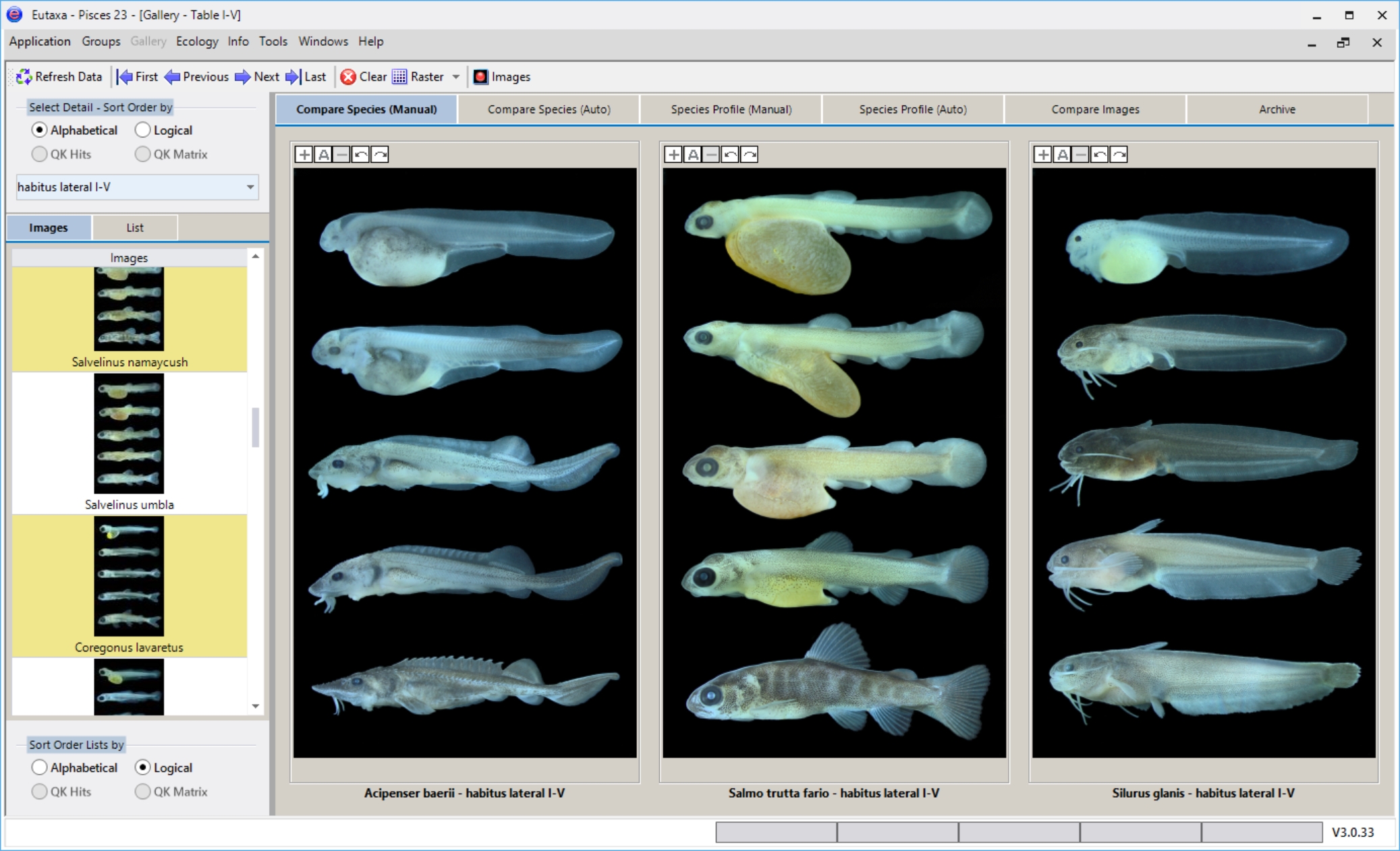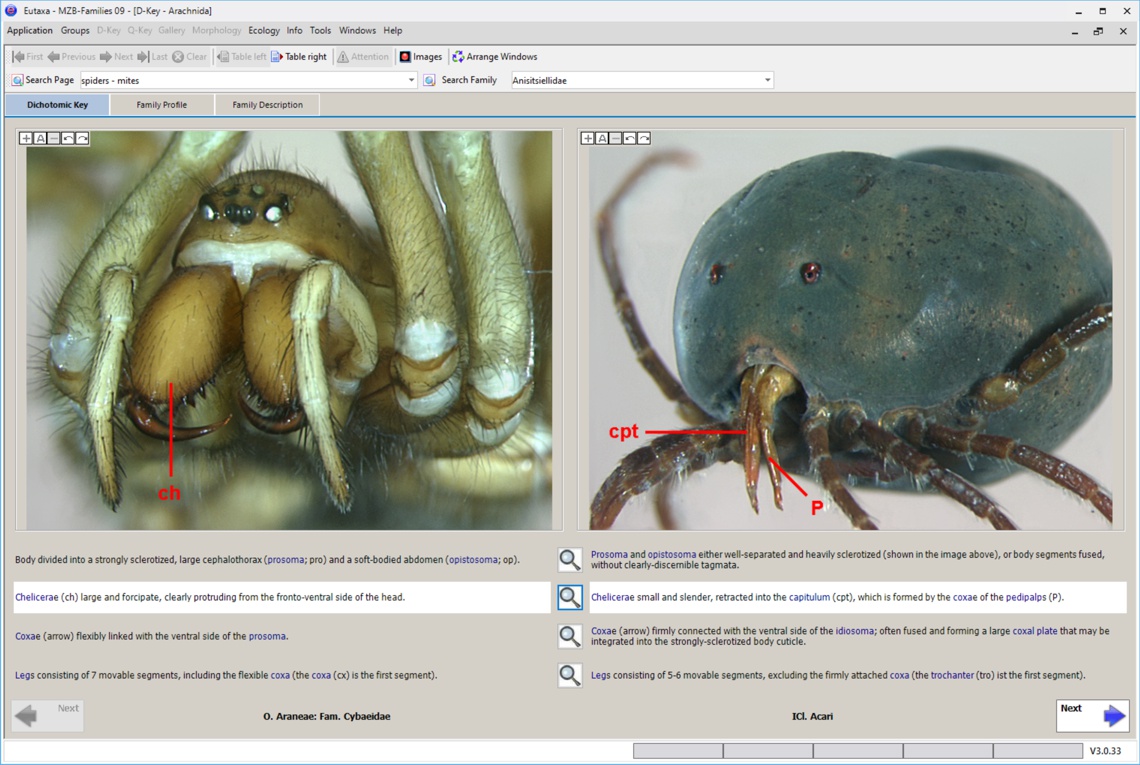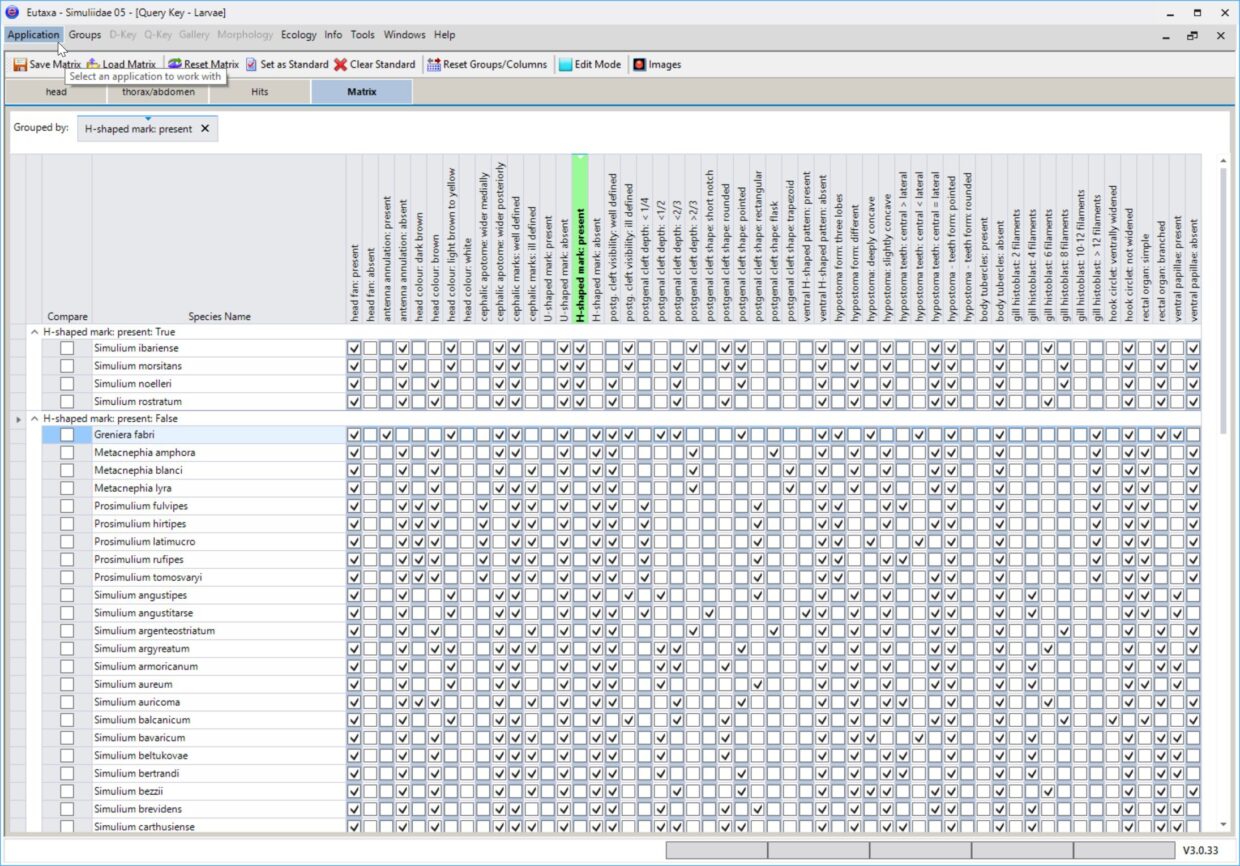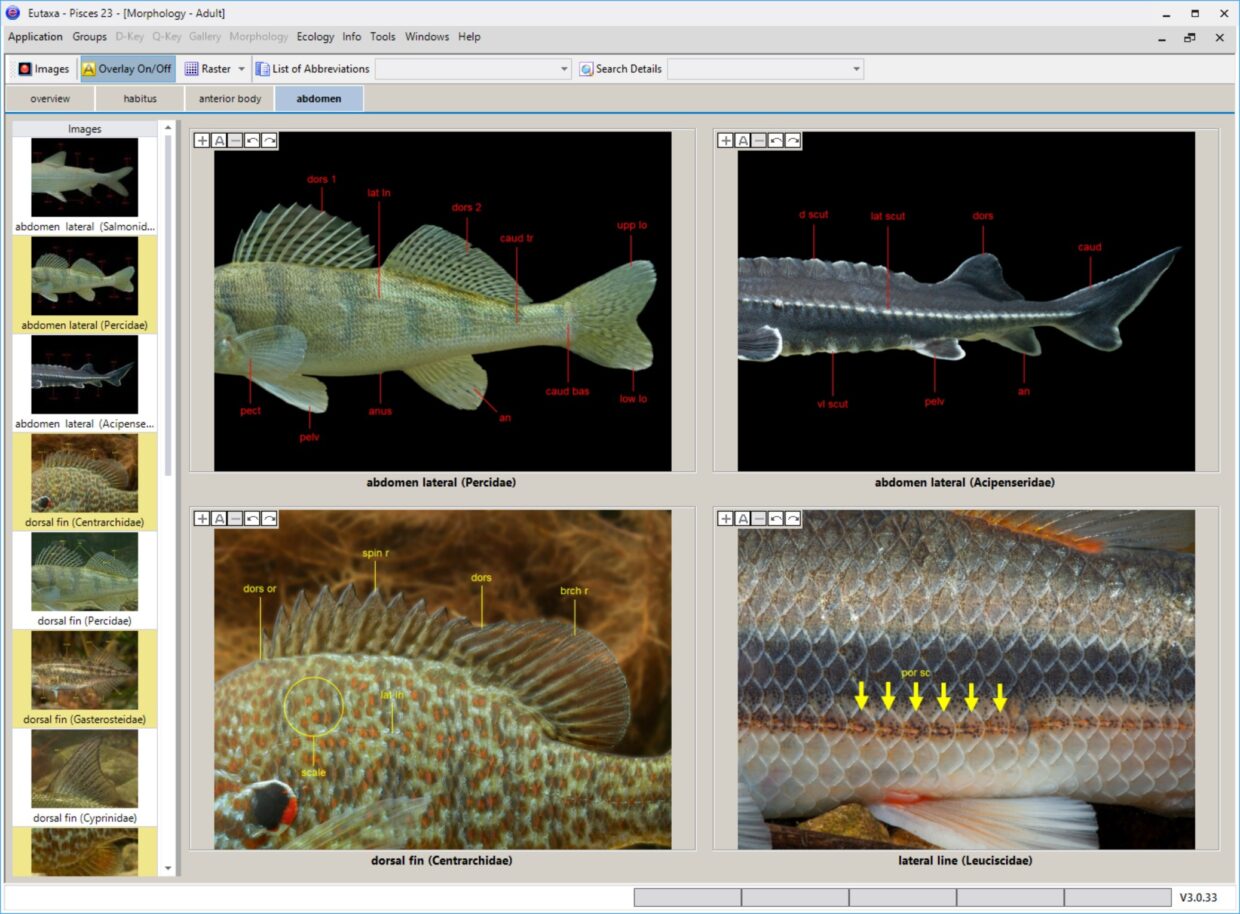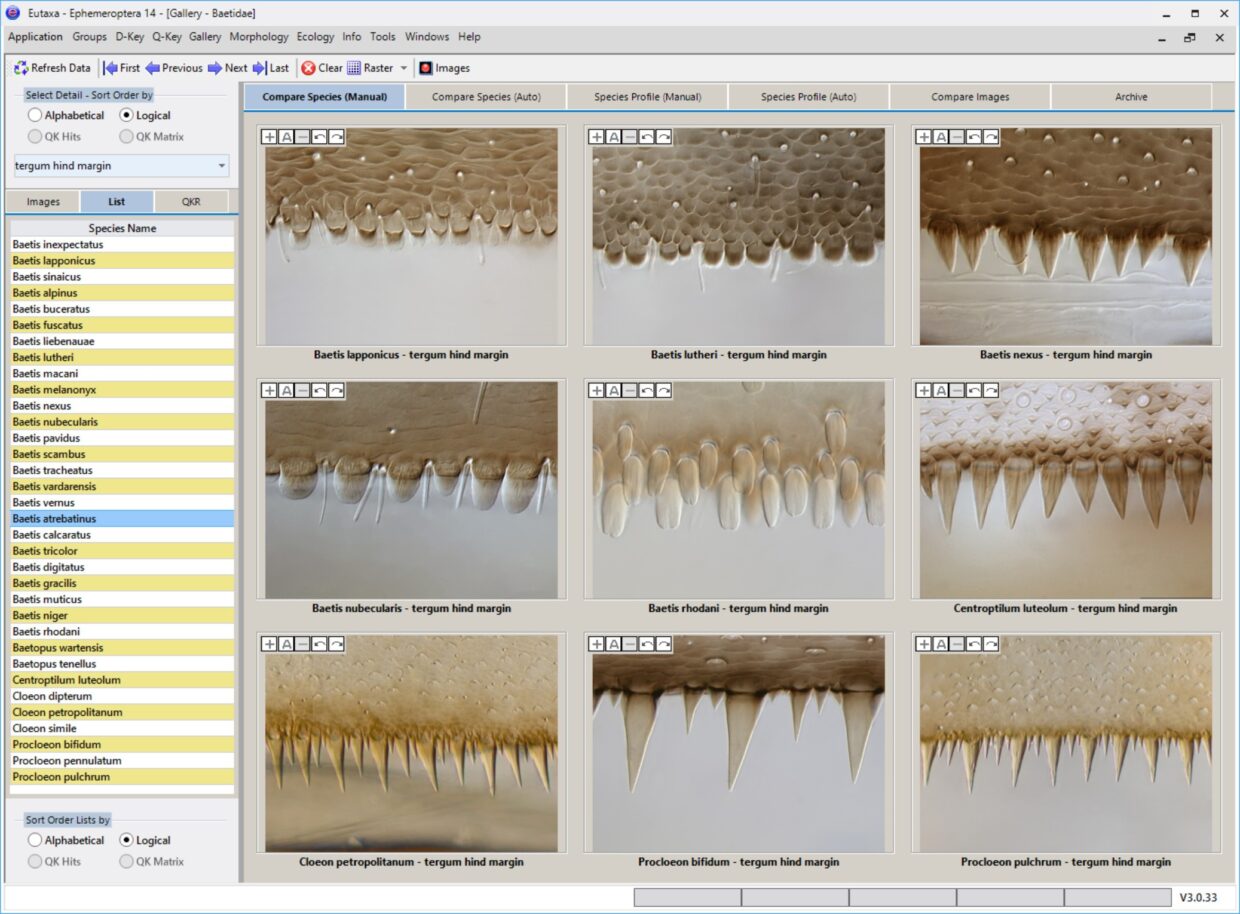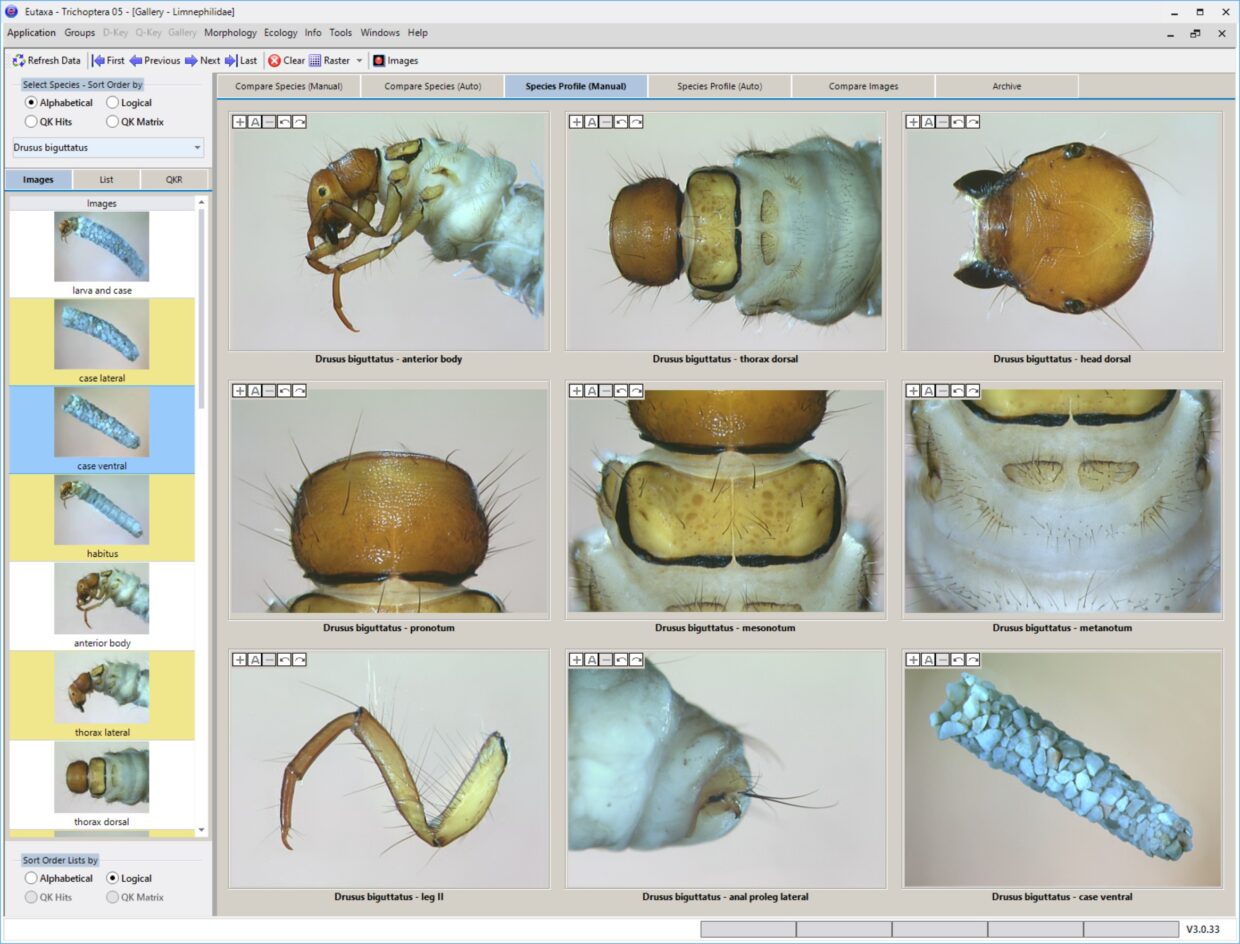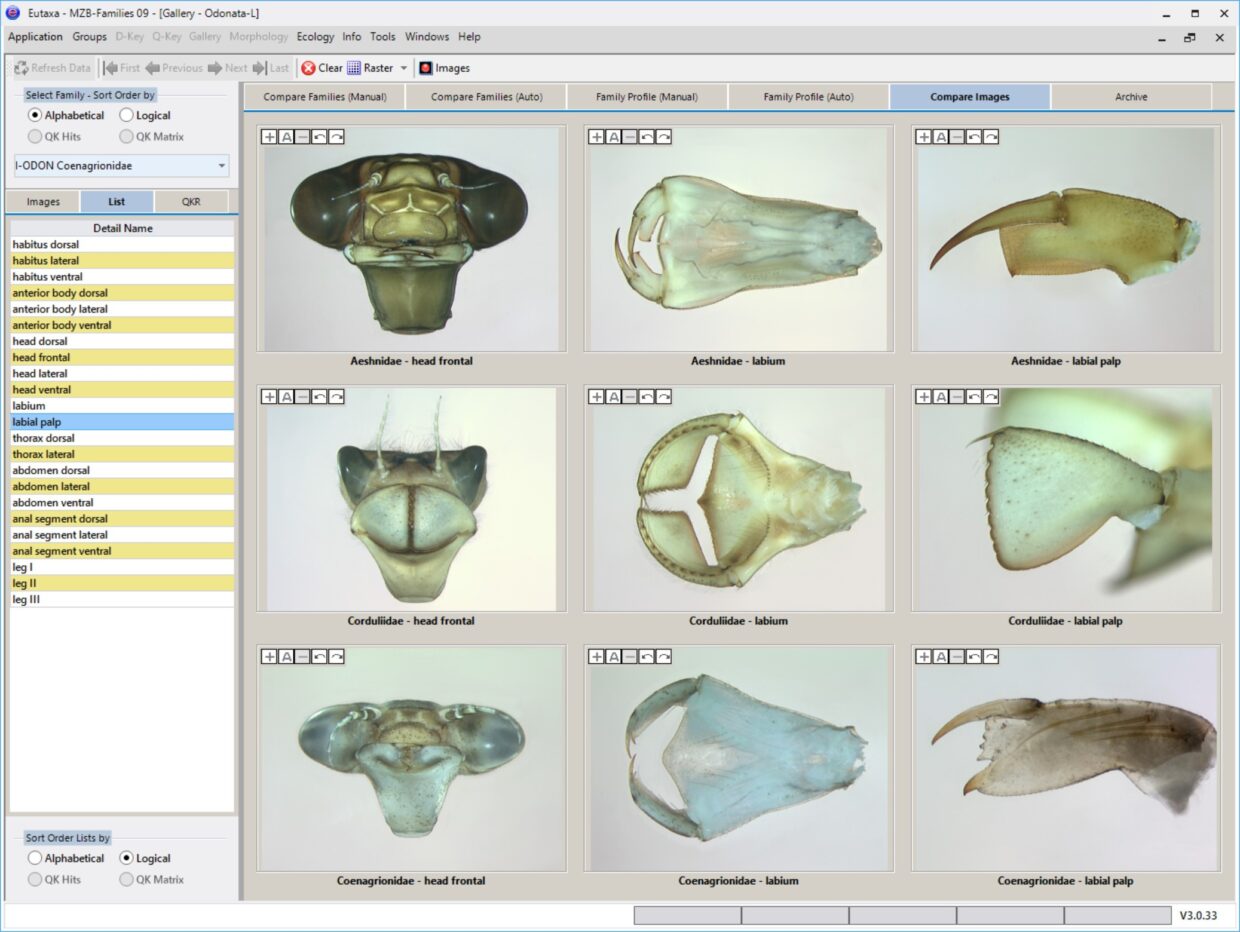program structure
design & function of
Sub-applications
NAVIGATION
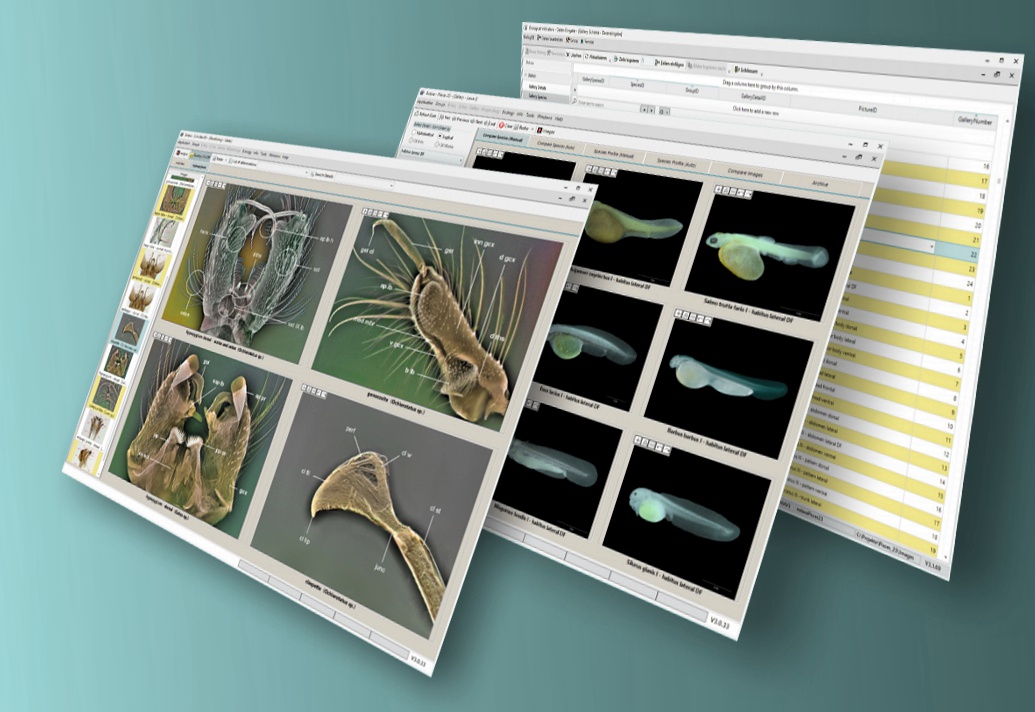
D-Key, Query Key, Morphology & Ecology
Each product contains of several sub-applications:
D-Key: This section contains the dichotomous key for exact identification down to species level. All features are documented by microscopic images and can be compared for conformity (figure on the right).
Query Key: The multivariable key is used for species determination as well as for sorting or grouping species according to matching criteria. The results can be transferred to the Gallery (reference collection) to sort images according to the last Query Key calculation.
Modular Design of the Software
Eutaxa has developed a special software that allows users to apply different techniques for the identification of organisms, or to retrieve images from a database, to arrange them on forms and to compare them with each other. The image database of each program contains thousands of high-quality microscopic images and allows access to a complete electronic reference collection. Both systems, identification keys (dichotomous and multivariable key) and reference collection, are linked to each other, so that the user can check the quality of the identification work at any time by comparison with the image material.
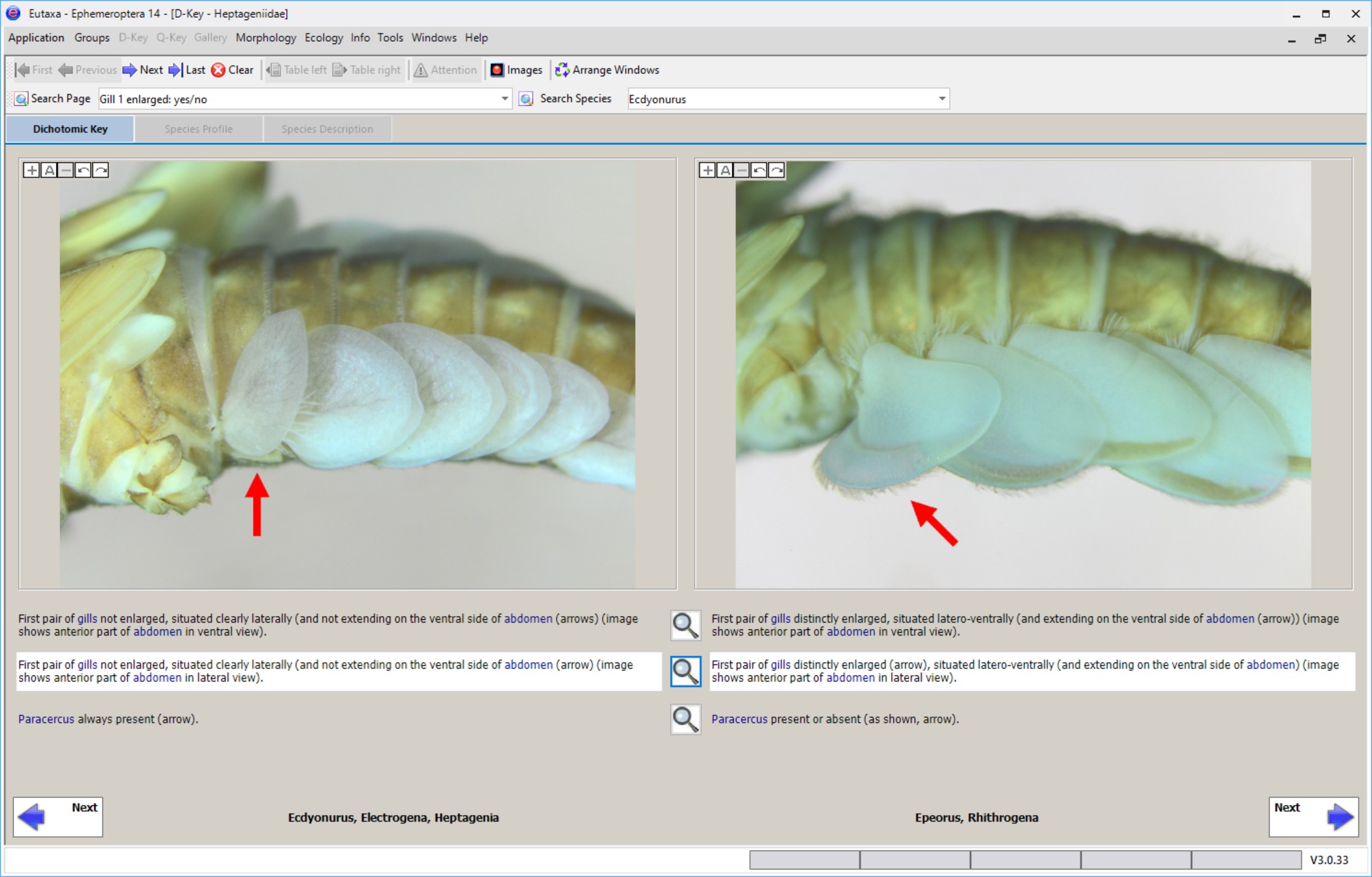
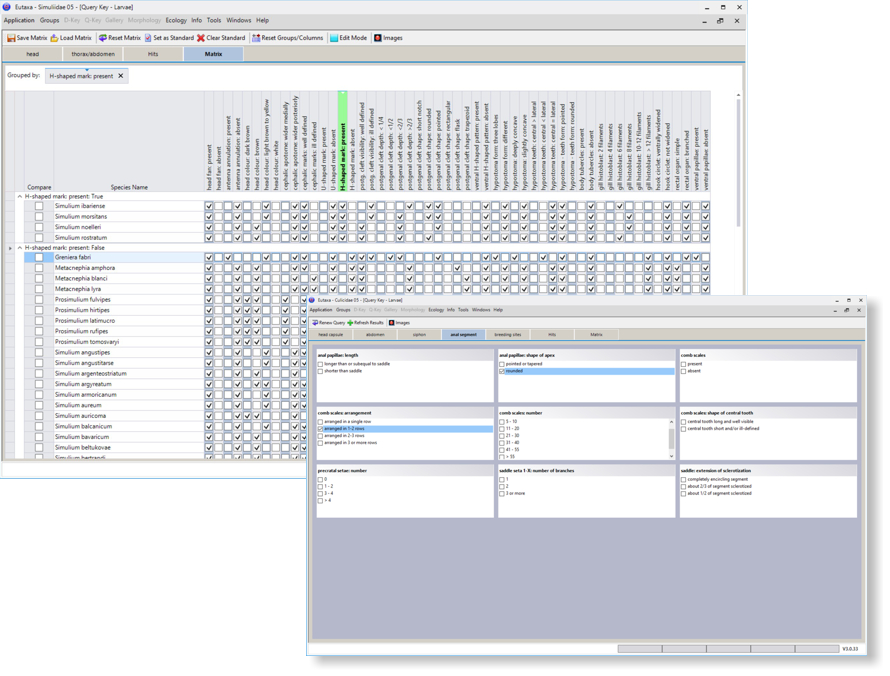
Morphology: This sub-application provides information about the morphology of a group. All characteristics relevant for determination are documented and described in detail in numerous images (figure on the right).
Ecology: In this sub-application, information on ecology and systematics, lists with synonyms and maps with the geographical distribution can be retrieved for each species.
Matrix Card: The Query Key matrix (figure left) contains the tabular listing of species and morphological characteristics. The records can be sorted or grouped by species names as well as by matching or non-matching features and allow the formation of feature clusters. This method may be used, among other things, in the determination of fragmentary or damaged material for which the dichotomous key (D-Key) is not applicable.
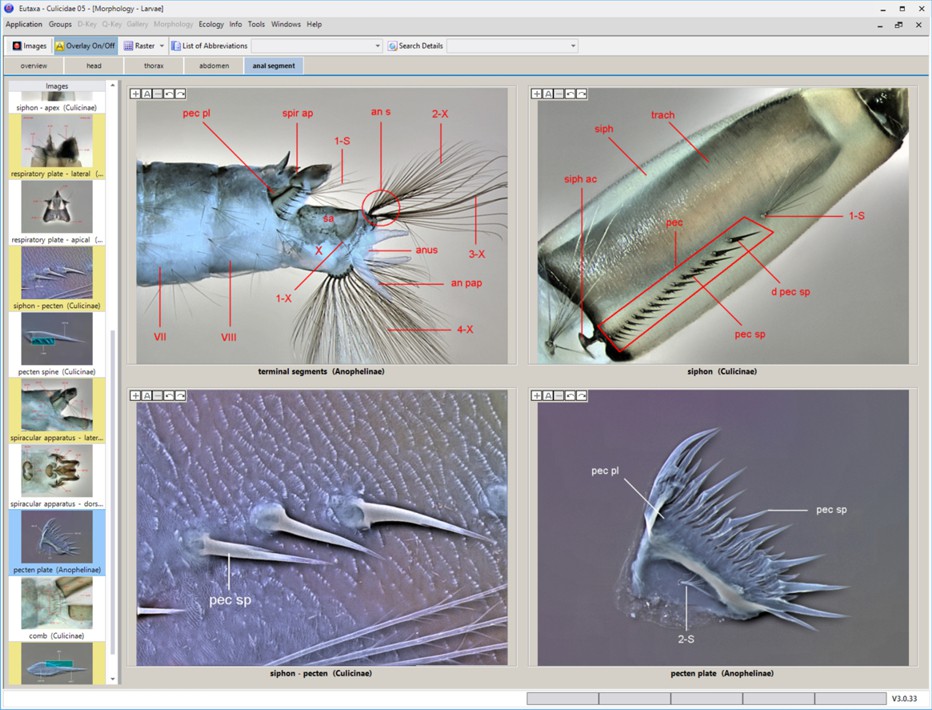
advantages of a digital reference collection
Documentation
Each species is precisely documented by numerous microphotographic images
rare species
The collection also includes rare species known only to a few experts
comparability
Users may combine and compare images of species and features as desired
low-maintenance
The collection is stored on the PC and can be retrieved at any time, maintenance-free and space-saving
updates
The collection may be refreshed and extended by updates via Internet
linkage with d-key
Reference collection and keys are linked and can be used for species identification
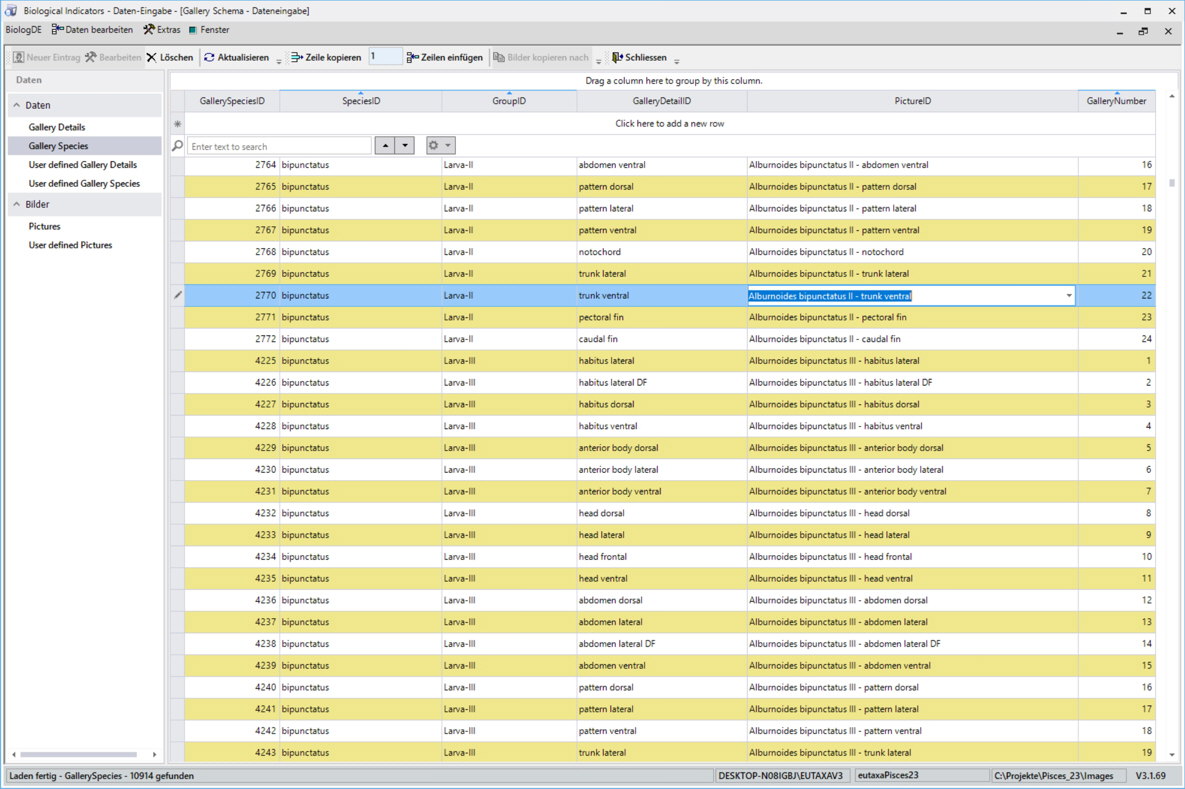
Three options are available in the reference collection for comparing images:
1. The same characteristics of different species can be compared on one page (top left).
2. Different images of one species can be displayed on the same page (center left).
3. Different features of several species may be arranged per page (bottom left). A more detailed description is available under point Gallery.
Electronic Reference Collection - Gallery
Gallery: To build up the digital image archive, thousands of images of features relevant for determination were produced using the EFI method (extended focal imaging) and stored in a database. Between 20 and 30 images were produced per species, which can be arranged and compared with each other in the Gallery sub-application in any number, size and combination.
